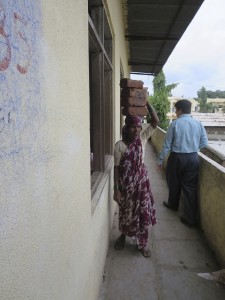Brick and Mortar
One theme that ran steadily throughout my trip to India was bricks – stones, tiles, bricks, and sand. We saw so much building going on, so much construction debris and piles of supplies that it gave me a constant reminder that India is both on the move and ancient at the same time. That it is re-building the aging infrastructure, brick-by-brick, while also raising up massive new high rises to house the population growth and new business. I took pictures of the stones as they started to permeate my vision. Workers piling bricks up high on their heads to pass to others, all seemingly insignificant in pace yet as the processions never stopped, the progress was steady.
We visited many forts, tombs, temples, and yes, The Taj Mahal. Our guides proudly spoke of the history and use of each building and again, I was mesmerized by the restoration efforts that were ongoing and by the admission that even The Taj was a Brick and Mortar structure covered by a veneer of marble.
Brick and Mortar – the foundation of many civilizations. The metaphor to education cannot be ignored. What is the Brick and Mortar of education policy in the United States? How can it change, be gutted, and then rebuilt without careful selection of construction material? How can my state, North Carolina, survive the current onslaught of legislators dismantling the Brick and Mortar of our schools with policies that reverse positive growth in education, take funding away from schools, and push privatization instead of support for public schools and their teachers? Our best and brightest teachers cannot afford to stay in teaching. Affluent parents have now been given a green light to move their children to schools that do not bear the same burdens.
Thirty-five talented, passionate educators just returned from a life-altering trip to India where we visited schools and businesses, and witnessed first hand the damage done to children when public education does not serve with fidelity. We heard time and time again that no middle class parents would think of sending their children to a public school. Yet the vast majority of Indian children, especially in the villages, have only the public school to hope for. Many of the schools did not have lights or electricity in their classrooms, they are overcrowded, lack supplies, and have teachers who are so overworked that the best they can do is offer rote-learning in shifts. India is sharing her lessons with us – are we ready to listen?

